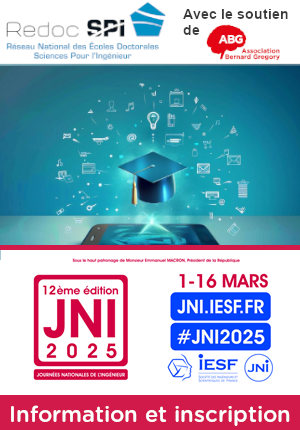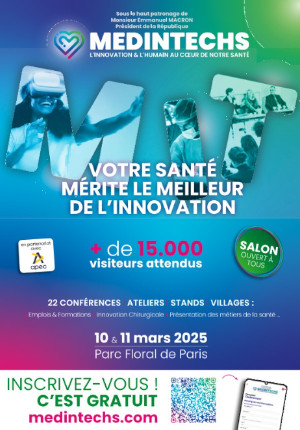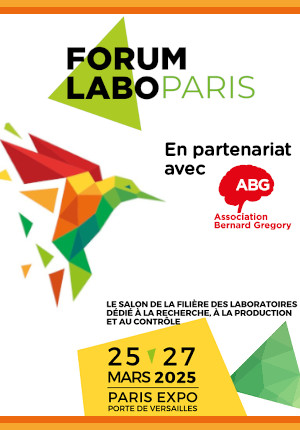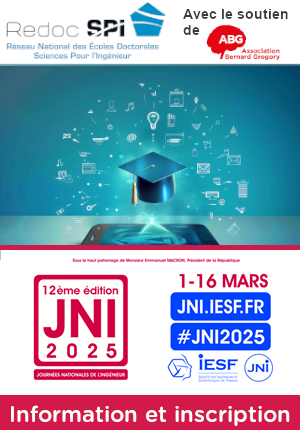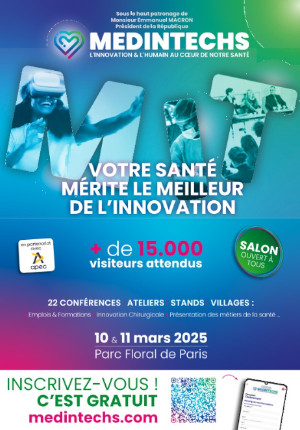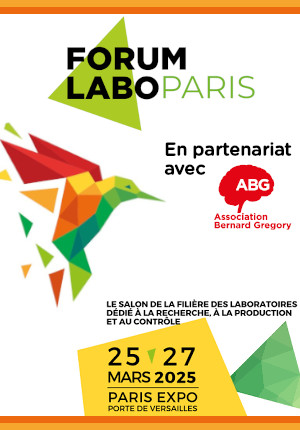Micronageurs rapides pilotés par ultrasons // Fast microswimmers controlled by ultrasound
|
ABG-128738
ADUM-61467 |
Thesis topic | |
| 2025-02-19 | Public funding alone (i.e. government, region, European, international organization research grant) |
Université Grenoble Alpes
Saint-Martin d'Hères Cedex - France
Micronageurs rapides pilotés par ultrasons // Fast microswimmers controlled by ultrasound
- Electronics
Micronageurs, Ultrasons, Couplage fluide-structure-onde, Colloides, Ecoulements instationnaires
Microswimmers, Ultrasound, Fluid-structure-wave coupling, Colloids, Non-stationnary flows
Microswimmers, Ultrasound, Fluid-structure-wave coupling, Colloids, Non-stationnary flows
Topic description
Les écoulements à petit échelle sont intuitivement associés aux notions de lenteur et de laminarité, avec un contrôle par des mécanismes de dissipation. Cela rend les mécanismes de transport particulièrement inefficaces, par rapport à leurs homologues à des échelles plus grandes, facilités par l'inertie. Cette problématique inclut des questions de mélange, de tri ou de nage de petites quantités de matière ou d'objets. Nous proposons dans le cadre de cette thèse un changement de paradigme : une instabilité de flambage induite par ultrasons, affectant des objets élastiques géométriquement simples (des coquilles sphériques creuses) fera entrer la mécanique des fluides inertielle dans le domaine microscopique. L'instabilité peut transformer l'énergie potentielle fournie par un signal ultrasonore en énergie cinétique à un rythme de plusieurs milliers de fois par seconde. L'objectif du projet est d'acquérir une compréhension fondamentale de ce nouveau mécanisme en analysant l'interaction entre le signal ultrasonore de forçage, l'hydrodynamique, la mécanique des coquilles, la pression des gaz et la dynamique des formes. Nous étudierons ainsi comment un fluide peut être propulsé à proximité de la coquille, d'une manière rapide, contrôlable et efficace. En appliquant ce principe au problème de la micro-motilité, cela devrait conduire à un mécanisme de propulsion qui est de plusieurs ordres de grandeur plus rapide que les techniques actuelles gouvernant la propulsion des micronageurs artificiels. La combinaison d'un puissant mécanisme de génération de flux réalisé par des objets microscopiques simples à produire (coquilles creuses) et alimenté par une technique bon marché et contrôlable (ultrasons) ouvre une multitude d'autres applications, y compris la délivrance ciblée de médicaments.
------------------------------------------------------------------------------------------------------------------------------------------------------------------------
------------------------------------------------------------------------------------------------------------------------------------------------------------------------
Flows at the microscale are intuitively associated with being slow, laminar, and controlled by dissipation mechanisms. This makes transport mechanisms particularly inefficient, compared to their inertia-driven counterparts at larger scales. Examples include the mixing, sorting, and swimming of small quantities or objects.
Through this thesis, we propose a paradigm shift: an ultrasound-driven buckling instability of geometrically simple elastic objects (hollow spherical shells) will make inertial fluid mechanics enter the microscopic realm. The instability can transform potential energy provided by an ultrasound signal into kinetic energy at a rate of thousands of times per second. The objective of the project is to gain a fundamental understanding of this novel mechanism by analyzing the interaction between the forcing ultrasound signal, hydrodynamics, shell mechanics, gas pressure and shape dynamics. Thereby we will investigate how fluid can be propelled in the vicinity of the shell, in a fast, controllable, and efficient way. For the microswimmer application, this should lead to a propulsion mechanism which is orders of magnitude faster than current techniques.
The combination of a powerful flow generation mechanism realized by simple-to-produce microscopic objects (hollow shells) and powered by a cheap and controllable technique (ultrasound) opens a multitude of further applications, including targeted drug delivery.
------------------------------------------------------------------------------------------------------------------------------------------------------------------------
------------------------------------------------------------------------------------------------------------------------------------------------------------------------
Début de la thèse : 01/10/2025
------------------------------------------------------------------------------------------------------------------------------------------------------------------------
------------------------------------------------------------------------------------------------------------------------------------------------------------------------
Flows at the microscale are intuitively associated with being slow, laminar, and controlled by dissipation mechanisms. This makes transport mechanisms particularly inefficient, compared to their inertia-driven counterparts at larger scales. Examples include the mixing, sorting, and swimming of small quantities or objects.
Through this thesis, we propose a paradigm shift: an ultrasound-driven buckling instability of geometrically simple elastic objects (hollow spherical shells) will make inertial fluid mechanics enter the microscopic realm. The instability can transform potential energy provided by an ultrasound signal into kinetic energy at a rate of thousands of times per second. The objective of the project is to gain a fundamental understanding of this novel mechanism by analyzing the interaction between the forcing ultrasound signal, hydrodynamics, shell mechanics, gas pressure and shape dynamics. Thereby we will investigate how fluid can be propelled in the vicinity of the shell, in a fast, controllable, and efficient way. For the microswimmer application, this should lead to a propulsion mechanism which is orders of magnitude faster than current techniques.
The combination of a powerful flow generation mechanism realized by simple-to-produce microscopic objects (hollow shells) and powered by a cheap and controllable technique (ultrasound) opens a multitude of further applications, including targeted drug delivery.
------------------------------------------------------------------------------------------------------------------------------------------------------------------------
------------------------------------------------------------------------------------------------------------------------------------------------------------------------
Début de la thèse : 01/10/2025
Funding category
Public funding alone (i.e. government, region, European, international organization research grant)
Funding further details
Concours pour un contrat doctoral
Presentation of host institution and host laboratory
Université Grenoble Alpes
Institution awarding doctoral degree
Université Grenoble Alpes
Graduate school
510 I-MEP² - Ingénierie - Matériaux, Mécanique, Environnement, Energétique, Procédés, Production
Candidate's profile
Les compétences requises sont :
• l'aptitude au travail en équipe dans un cadre collaboratif,
• des compétences expérimentales de base en mécanique des fluides et de la créativité. Des connaissances en acoustique ou en chimie des procédés seront un atout supplémentaire.
• une connaissance de la mécanique des milieux continus (fluides et solides).
Skills required: • Ability to work cooperatively. • Basic experimental skills in fluid mechanics and creativity. Skills in acoustics or in chemistry would be a plus. • Knowledge in solid and fluid mechanics.
Skills required: • Ability to work cooperatively. • Basic experimental skills in fluid mechanics and creativity. Skills in acoustics or in chemistry would be a plus. • Knowledge in solid and fluid mechanics.
2025-05-12
Apply
Close
Vous avez déjà un compte ?
Nouvel utilisateur ?
More information about ABG?
Get ABG’s monthly newsletters including news, job offers, grants & fellowships and a selection of relevant events…
Discover our members
 CASDEN
CASDEN  Aérocentre, Pôle d'excellence régional
Aérocentre, Pôle d'excellence régional  Institut Sup'biotech de Paris
Institut Sup'biotech de Paris  Institut de Radioprotection et de Sureté Nucléaire - IRSN - Siège
Institut de Radioprotection et de Sureté Nucléaire - IRSN - Siège  Ifremer
Ifremer  TotalEnergies
TotalEnergies  MabDesign
MabDesign  ONERA - The French Aerospace Lab
ONERA - The French Aerospace Lab  ADEME
ADEME  Généthon
Généthon  Nokia Bell Labs France
Nokia Bell Labs France  Laboratoire National de Métrologie et d'Essais - LNE
Laboratoire National de Métrologie et d'Essais - LNE  SUEZ
SUEZ  Groupe AFNOR - Association française de normalisation
Groupe AFNOR - Association française de normalisation  Tecknowmetrix
Tecknowmetrix  PhDOOC
PhDOOC  CESI
CESI  MabDesign
MabDesign  ANRT
ANRT



